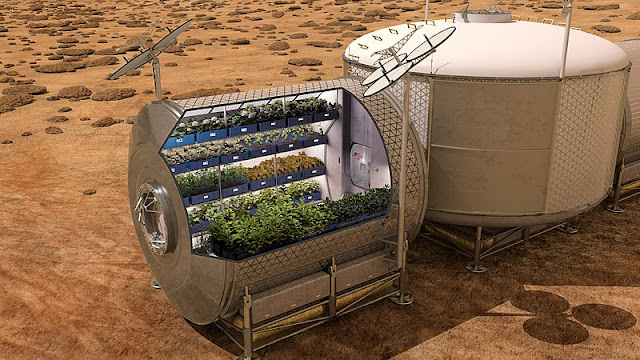The Salads Grown in Space
If you watched the Martian, you might remember that Matt Damon used his own urine to plant potatoes and survive on Mars. Sadly, this is not proven yet. However, through years of careful testing, we know that we can grow plants in space. This may help us on future missions where we need to go deeper into space. Growing plants in space is an important juncture that scientists will need to pass. By growing plants in space, not only are we creating a food source, but we are also creating a source of oxygen, an air and water purifier, and something to recycle feces. It will also save a lot of money for space programs all over the world.
 |
| Zinnia Flower Floating Inside ISS |
There are many technical challenges that make growing plants in space hard. These problems include reduced gravity, lighting, pressure, and increased radiation. To solve these problems, scientists use greenhouses to grow plants. Plants were grown in space experience microgravity. This may cause their stems or roots to be weaker than normal. Additionally, space radiation could affect the DNA of plant life. The low-pressure environments of places like Mars could affect the net photosynthesis and evaporation rates. Finally, there is no scientific evidence that Martian soil has the nutrients that plants need to survive.
 |
| Advanced Astrocultue Soybean Experiment |
 |
| Cabbage Growing in Veggie Module |
 |
| First Growth Test of Crops in the APH on the ISS |
Space Organizations have also just started to try growing plants on the Lunar surface. China’s Chang’e 4 lunar lander did this in January 2019. During its mission, it carried plant seeds and insect eggs in a sealed “biosphere” to see whether the two would grow in synergy. These seeds, which consisted of potatoes, tomatoes, and Arabidopsis thaliana became the first plants to be grown on the moon. The insect eggs, which are silkworm eggs will help produce carbon dioxide and germinate the plants. Scientists hoped that the two create a synergy to survive.
 |
| Sunflower Plant on the ISS |
As humans start to look to missions that will go deeper into space, scientists need to consider the essentials to survive such as how we should grow food in space. Growing food in space is important, as not only does it provide us with a source of energy, but it could also be used as an oxygen source and a filtration system. Though there have been some failed attempts, scientists have found many ways that we can grow plants in space and even on other celestial bodies. We are soon getting closer to a future where astronauts can crave a salad, and then make one in space or on Mars.
 |
| Hypothetical Greenhouse on a Mars Base |
Sources:
Heiney, Anna. “Growing Plants in Space.” NASA, NASA, 9 Apr. 2019, www.nasa.gov/content/growing-plants-in-space.
“Plants in Space.” Wikipedia, Wikimedia Foundation, 28 Jan. 2021, en.wikipedia.org/wiki/Plants_in_space.
“Space Farming.” Wikipedia, Wikimedia Foundation, 23 Jan. 2021, en.wikipedia.org/wiki/Space_farming.
“Vegetable Production System.” Wikipedia, Wikimedia Foundation, 11 Jan. 2021, en.wikipedia.org/wiki/Vegetable_Production_System.


Very interesting
ReplyDelete